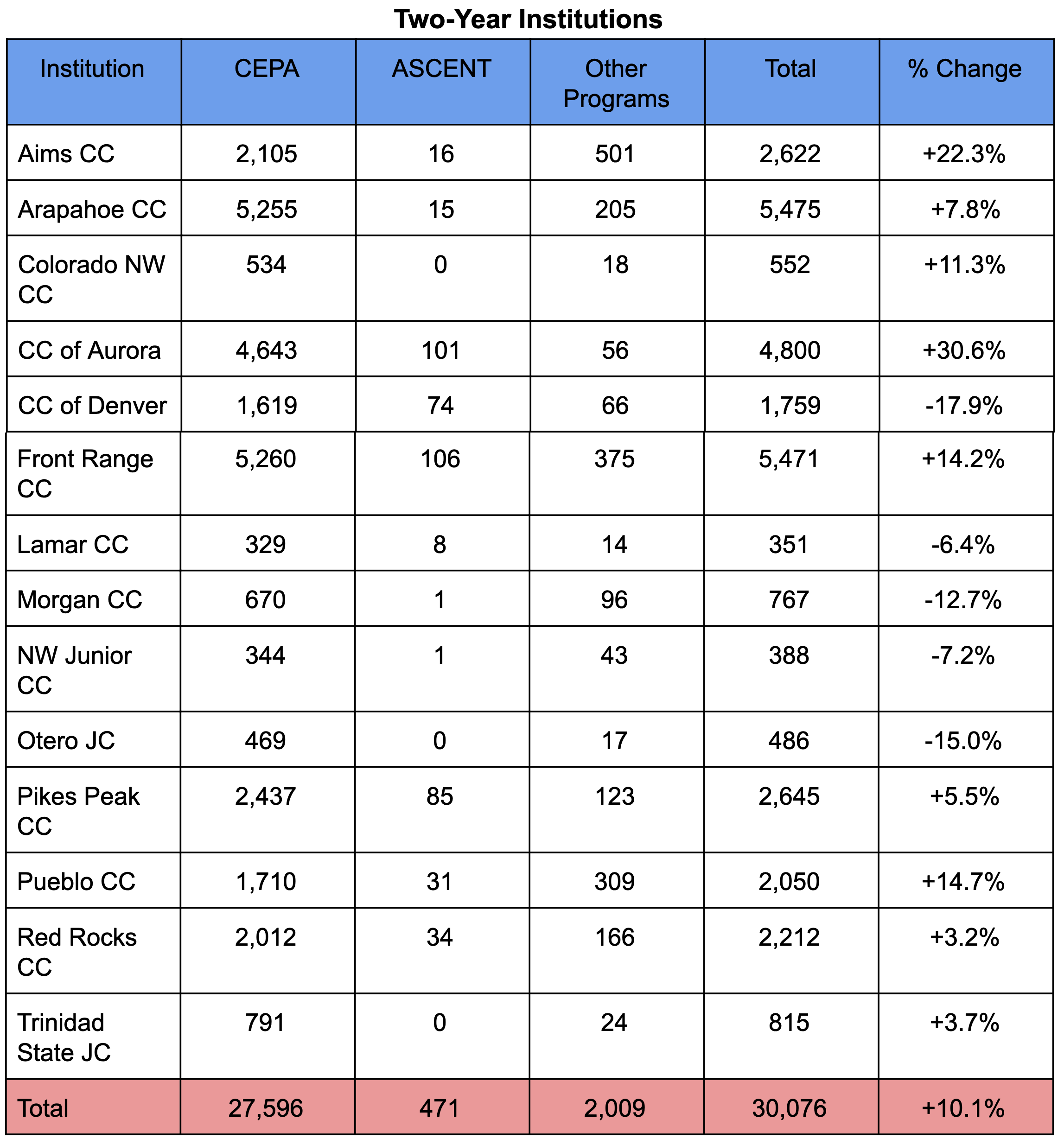In May 2009, the Colorado legislature passed the Concurrent Enrollment Programs Act (C.R.S. 22-35-101). Now, students interested in attending Colorado institutions for their post-secondary careers have the opportunity to enroll in the Concurrent Enrollment Program (CEPA). In CEPA, high school students from the 9th-12th grades may simultaneously take post-secondary courses, including academic or Career and Technical Education (CTE) courses, which may include coursework related to apprenticeship programs or internship programs at an institution of higher education. (It’s important to note that some schools may offer concurrent enrollment only to juniors and seniors). These courses, in addition to providing credit hours for any public Colorado institution, are designed to develop the knowledge, skills, and abilities needed for post-secondary education and the workplace beyond.
Additionally, some of the courses offered to seniors only are considered “Basic Life Skills” and have applications outside of the workforce. The ASCENT (Accelerating Students through Concurrent ENrollmenT) program is also available as a 5th-year program for graduating seniors who are remediation-free and on track to complete at least 12 credit hours of transcripted, credit-bearing, college-level post-secondary coursework before graduation. They remain students over their LEP in the year following their senior year, and the LEP receives the funding to pay for their tuition. In both the CEPA and ASCENT programs, the grades are recorded both by the university and the LEP. For the CEPA and ASCENT programs, the funding is supplied by the district’s per pupil revenue which they use to pay the tuition at the resident community college rate. The student must register for and authorize the transfer of the College Opportunity Fund (COF) to the Institution of Higher Education where they take classes in order to receive funding. Students who withdraw from the class, fail the class, or receive a score of “Incomplete” may be required to reimburse the Local Education Provider (LEP) that funded their efforts.
Qualified students interested in applying must submit an application and receive approval from their LEP no later than sixty days before the end of the academic term that immediately precedes the intended term of concurrent enrollment. Students need not be actively degree-seeking to be eligible for the CEPA, but they do have to be degree-seeking to be eligible for the ASCENT program. 98% of districts and 85% of high schools offer concurrent enrollment plans, and 78% of the students who take this program enroll in college the year afterwards, completing the first year with a higher average GPA and more credits than their peers. Forty-seven percent of students were enrolled in a credential-seeking program. From 2017-18, the average student attempted 8.5 hours of credit hours with an average of 8 hours passed. This data is collected by the Colorado Department of Higher Education’s (CDHE) Student Unit Record Data System (SURDS). The table below was provided by them.









